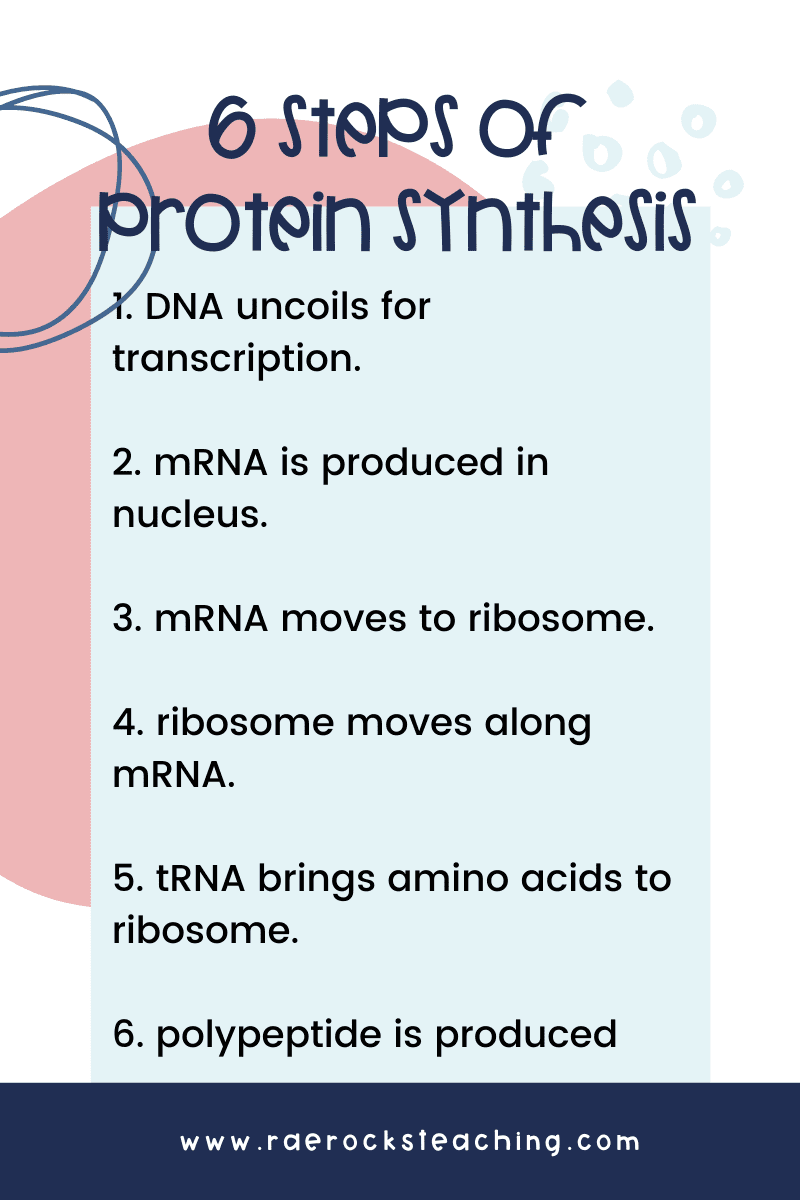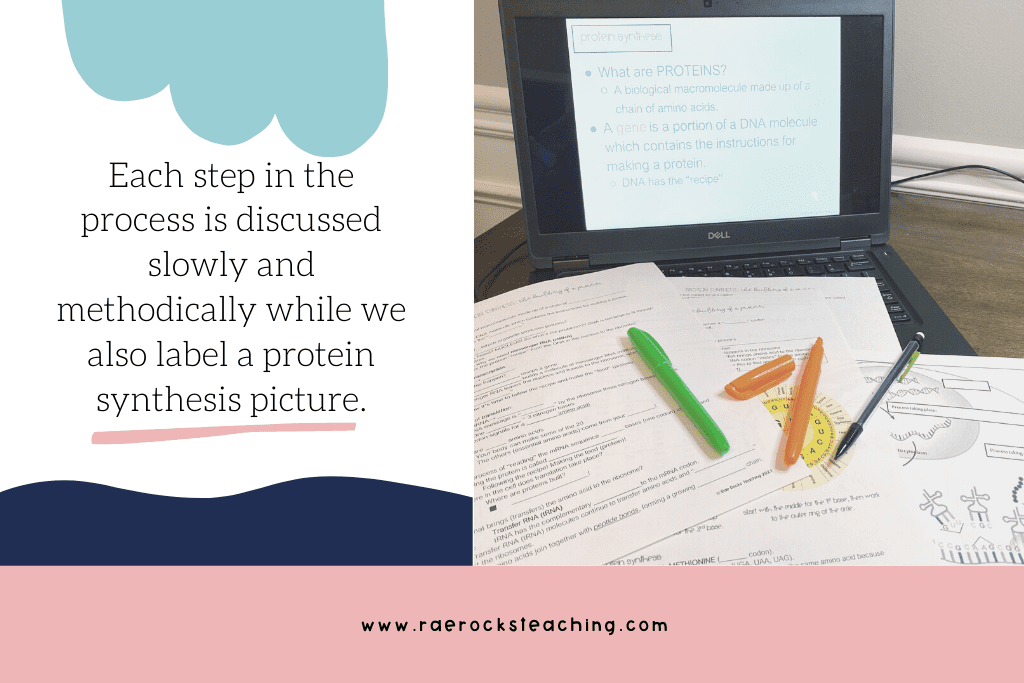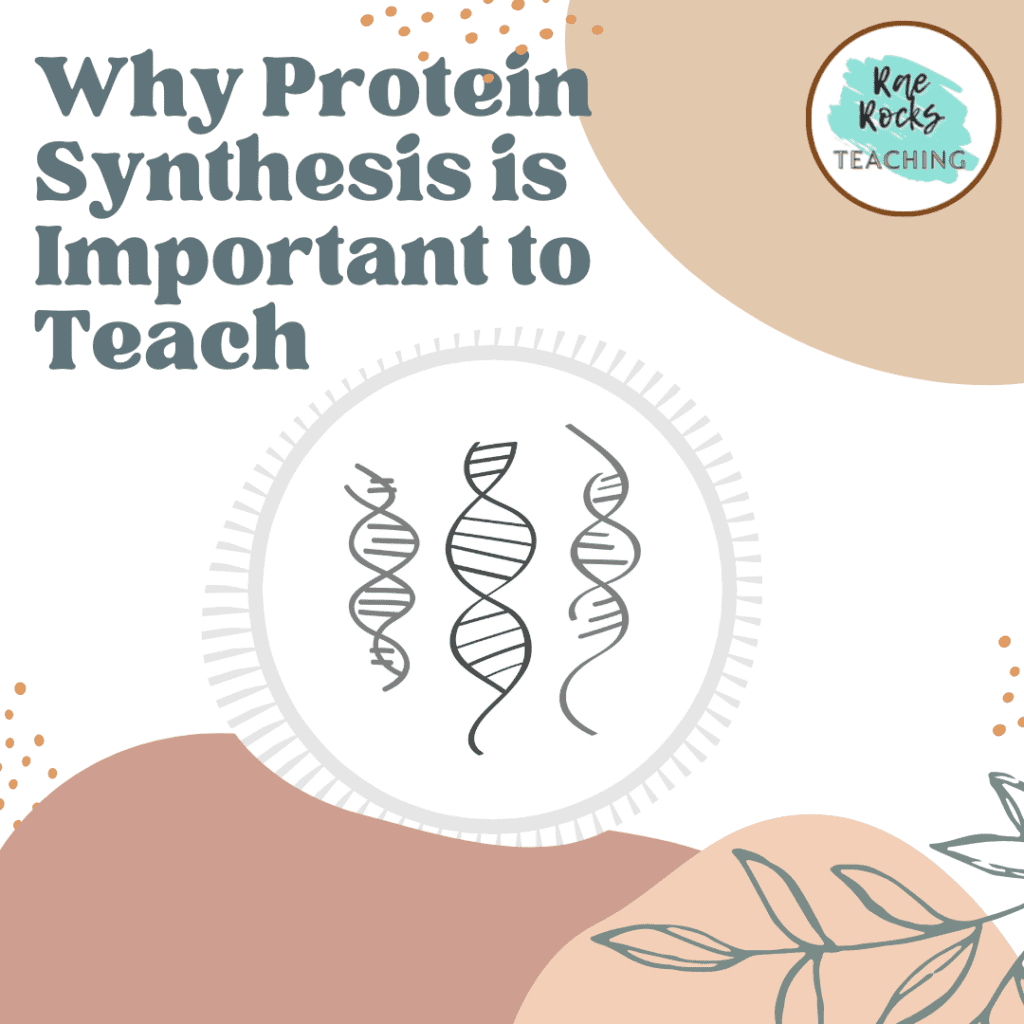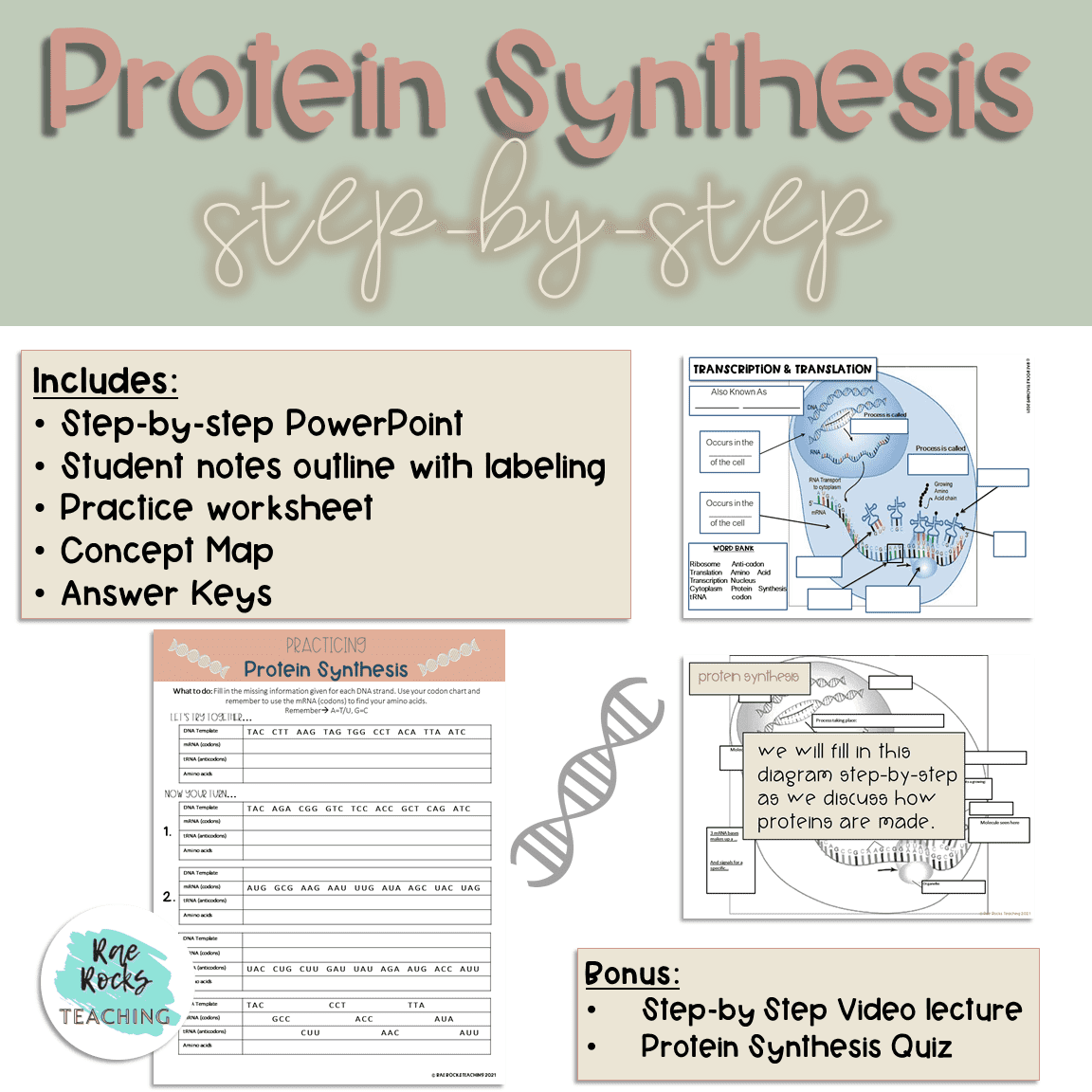Why protein synthesis is important to teach
Have you ever though about why protein synthesis is important to teach? Proteins are required for every structure and function inside cells. They influence all activities and without them, cells would not survive and the organism would die. Teaching students how proteins are made and their functions in living organisms are important because it is the basis for life. One may argue that understanding protein synthesis is not necessary unless they are going to have a career in biology, however, I strongly disagree. Students should learn and understand how proteins are made for many reasons. Whether a student becomes an athletic trainer, teacher, or salesperson, having a working knowledge of how the human body creates proteins for life is important.
What does protein synthesis mean?
Protein synthesis means building proteins by transcribing a copy of DNA into mRNA and translating that mRNA into amino acids at the ribosome. This process is often very difficult for students to understand, however, including videos, interactives, and labeling can make the concept much less intimidating.
Overview of Protein Synthesis 6 Steps
Protein synthesis is the building of a protein from the code in the DNA. The process starts in the nucleus when the DNA temporarily unzips allowing the mRNA bases to form the complementary code. Since the DNA is too large of a molecule to leave the nucleus, the mRNA (messenger RNA) must transcribe the code from the DNA. mRNA is much smaller and can leave the nucleus through the nuclear pores. That part of the process is called transcription. Once the single-stranded mRNA has left the nucleus, it travels through the cytoplasm and arrives at the ribosome. The mRNA is churned through the ribosome and is read 3 bases at a time (codon). Each codon codes for a specific amino acid. The tRNA (transfer RNA) travels around the cytoplasm to retrieve the correct amino acid. It brings the amino acid back to the ribosome where it is dropped off. The codons are read by the ribosome until the entire sequence of mRNA is completed. The ribosome assembles the amino acids into a polypeptide chain as they are dropped off by the tRNA.

-
Save
Why is DNA important in Protein Synthesis?
DNA is the code to life. It contains the blueprint that maps out every fiber of living organisms and is the brain of the operation. DNA is responsible for every cell, tissue, organ, characteristic, mutation, disease, etc. in our bodies. Without DNA, there would be no living organisms. It’s THAT important.
I remember the first few years I started teaching, I really had no idea how to teach protein synthesis in a way that my students would understand. Heck, I was barely out of college and even though I knew the subject, teaching it to others is a different ball game. I had taken so many courses in science, but none of my science classes taught me HOW to teach this to students. My education classes didn’t teach me HOW to teach these topics to students either.

-
Save
So how can we make understanding protein synthesis easier?
In my early years of teaching, I blew through the material because I did not realize how difficult it was for students to learn. I had to rethink my approach to teaching protein synthesis. Not only did I need to slow down, but I needed to make it more relatable to them and deliver in smaller chunks. This is when I decided to deliver the consent in a step-by-step approach. Each student gets a diagram and notes that we fill in together.
Each step in the process is discussed slowly and methodically while we also label a protein synthesis picture. I also have students use colored pencils to color in if they would like. By slowing it down, it gives students an opportunity to digest the material as we go and I can stop for questions right when we run into a sticky point. I can immediately address their concern before moving forward. By the end of the discussion, students have a completed diagram fully labeled (and maybe colored) with all of the steps of protein synthesis on one page for them to refer back to.

-
Save
Since protein synthesis involves several linked structures that are not easily observed, protein synthesis is often a struggle for students to understand. Another option to incorporate into your classroom would be A Play of Protein Synthesis in the Classroom. This is a great way to get students up and interacting with the material after they have been taught it. A lot of students like to get up and out of their seats, so acting out the steps is another great option for incorporating visualization and kinesthetic activities into the topic.
Practicing Protein Synthesis
Practice makes perfect, right? This is when the students really start to understand protein synthesis and it finally clicks. We go through a few practice problems where students will transcribe and translate a gene. We discuss how to read an amino acid chart and then I let them work on their own. It is weirdly silent each time I let them start working independently because it’s actually kind of fun. Students start making those connections and by the end of the block, MOST of them get it. I always emphasize that we will continue to build upon these skills and it will not be the last time we talk about protein synthesis. Over the course of the next several days, we review and make sure everyone understands. I like to include a Protein Synthesis Webquest and a concept map as well so they can really see the material in a variety of ways.

-
Save
Other Helpful Resources
I love using HHMI’s Biointeractive videos in my classroom. Their videos are beyond amazing. Below, I am sharing some great videos for helping you teach protein synthesis to your students.
Transcription (Basic Detail)
Translation (Basic Detail)
Protein Synthesis Lesson
Protein Synthesis (Amoeba Sisters)
Crash Course
I hope you have found these examples helpful and learned how to better prepare your students for understanding protein synthesis. If you have any other examples to share let me know in the comments! I absolutely love sharing with y’all and would love to connect on IG or Facebook. Follow me and send me a DM with what you need more of because I’m here to help!
Do you want the materials you learned about here and to save precious time preparing? Then you can get the entire protein synthesis lesson including lecture notes, practice worksheets, student outlines, and answer keys.
Want more help with lesson planning? Don’t forget to grab my free lesson planning template to help simplify that area of your teaching as well.
Related Articles
Translation Matters: Protein Synthesis Defects in Inherited Disease
3 Huge Reasons CER in Science is Important for Students
Share via:










One Response